GALLERY: HONG KONG'S STUNNING OPERA HOUSE
Futuristic Home
for an Ancient
Artform

COLIN SIMPSON
Xiqu Centre, Hong Kong
CANTONESE opera is reckoned to date back to the 13th century – but now it’s arrived in the 21st century with a bang. The HK$2.7 billion ($255 million) Xiqu Centre is an ultra-modern venue dedicated to the Cantonese style and other forms of traditional Chinese theatre. It overlooks Hong Kong’s Victoria Harbour in Tsim Sha Tsui, Kowloon.

The centre has a 1,072-seat main theatre, a smaller house, a seminar hall, professional studios and other facilities.

The strikingly contemporary design is accentuated by a traditional wooden structure that stands in the vast atrium.
The wooden building is the venue for a photo exhibition illustrating the development of the site, which took eight years.
The show includes images of women construction workers – a rare sight in many countries, but common in Hong Kong.



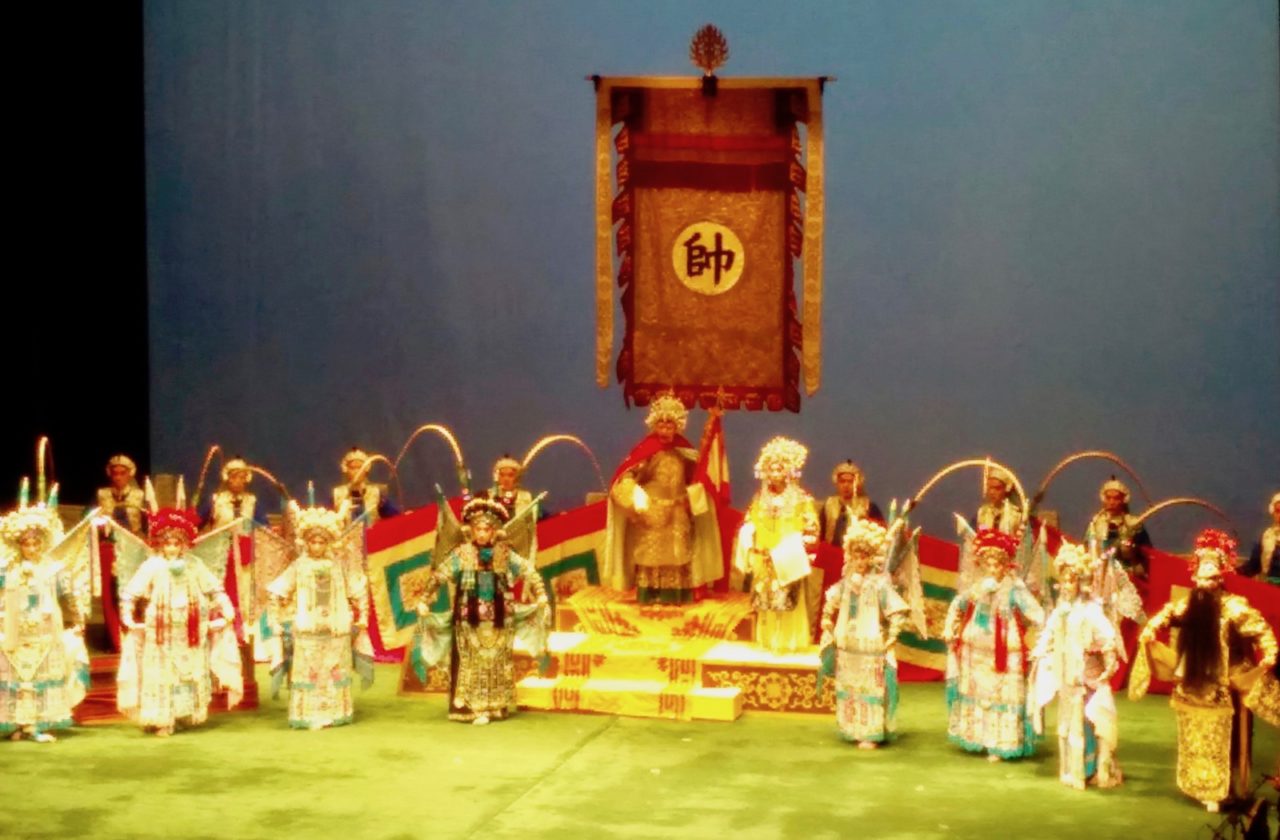
Cantonese Opera has been declared part of the intangible cultural heritage of humanity by Unesco.
It is one of hundreds of traditional opera styles from across China, though many are in danger of being lost because of disinterest and neglect. The best known is Peking opera – this photo is from a performance of the Women Generals of the Yang Family at Tsinghua University in Beijing.
The Xiqu Centre has signs describing classic Chinese literary and dramatic characters.

The centre is the first major part of a vast and super-ambitious new arts development to be completed. The West Kowloon Cultural District will eventually include museums, theatres, parks, exhibition spaces and other facilities. As a result there’s a lot of building work going on nearby.

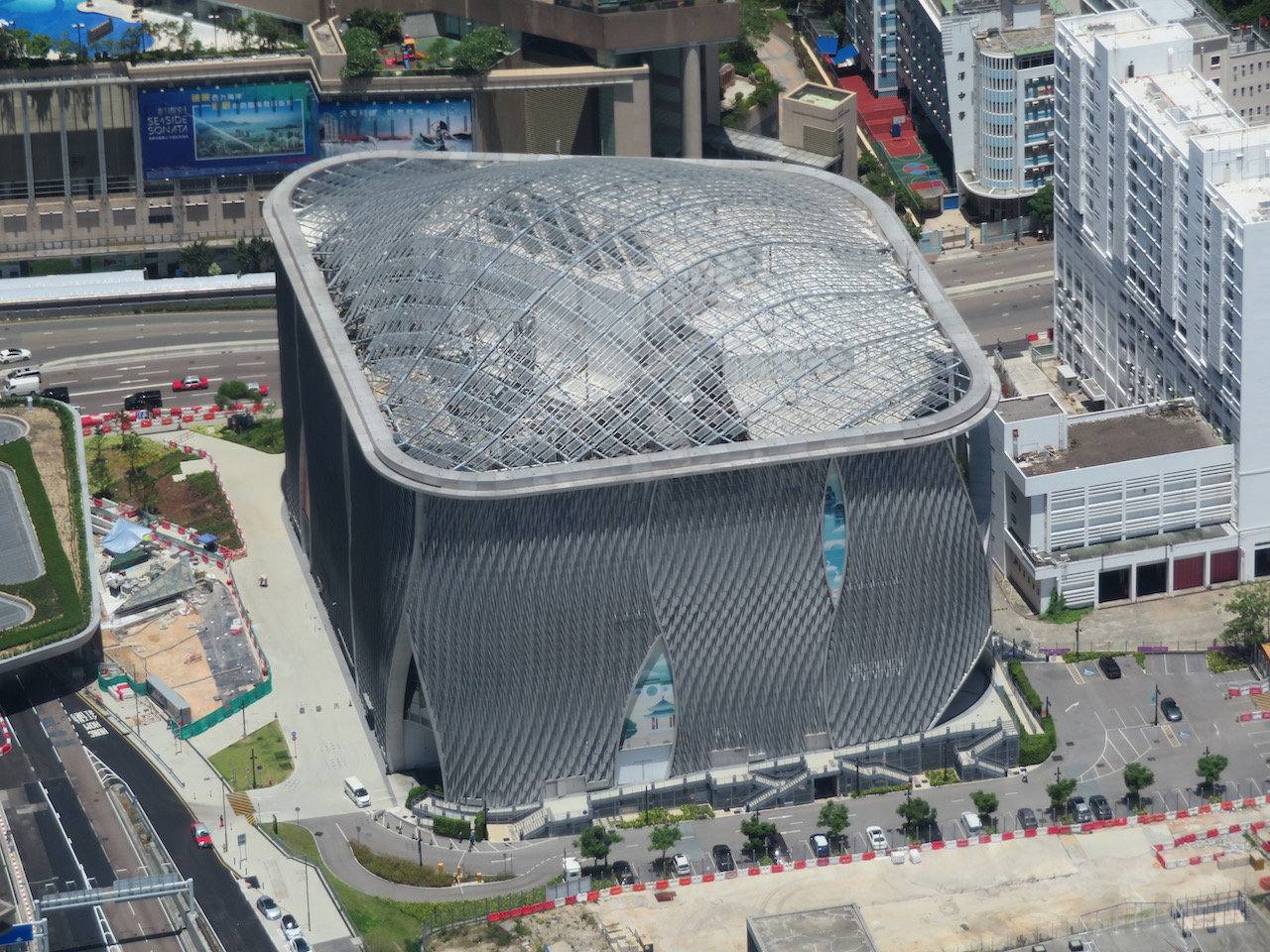

West Kowloon has become a particularly vibrant part of Hong Kong, with buildings such as this massive new station contributing to the air of large-scale urban renewal.

The West Kowloon Station, the terminus for the high-speed rail link to mainland China, is large enough to house a cathedral and puts many airport terminals in the shade.

Updated May 2020
MORE INFO
 XIQU CENTRE/West Kowloon Cultural District site has everything you need to know about visiting the centre, what’s on, ticketing, etc. READ MORE
XIQU CENTRE/West Kowloon Cultural District site has everything you need to know about visiting the centre, what’s on, ticketing, etc. READ MORE
 CHINA DAILY NEWSPAPER COLUMN: A night to remember at the Peking Opera. READ MORE
CHINA DAILY NEWSPAPER COLUMN: A night to remember at the Peking Opera. READ MORE
RELATED
 THE MUCH-LOVED HONG KONG MUSEUM OF ART has finally reopened after a massive four-year refurbishment – and it’s a triumph. READ MORE
THE MUCH-LOVED HONG KONG MUSEUM OF ART has finally reopened after a massive four-year refurbishment – and it’s a triumph. READ MORE
 WATCHING PINK DOLPHINS: Yes, there really are pink dolphins in the waters around Hong Kong, and regular boat trips mean you can watch them frolicking… READ MORE
WATCHING PINK DOLPHINS: Yes, there really are pink dolphins in the waters around Hong Kong, and regular boat trips mean you can watch them frolicking… READ MORE
 NIGHTMARE BUDDHAS: You may think of Buddha as a jolly, fat figure that brings peace and joy to the world. Visit this monastery and you’ll think again. Some of the golden statues of Buddhas… READ MORE
NIGHTMARE BUDDHAS: You may think of Buddha as a jolly, fat figure that brings peace and joy to the world. Visit this monastery and you’ll think again. Some of the golden statues of Buddhas… READ MORE RECOMMENDED
 WELCOME TO OUR WORLD! Afaranwide’s home page – this is where you can find out about our latest posts and other highlights. READ MORE
WELCOME TO OUR WORLD! Afaranwide’s home page – this is where you can find out about our latest posts and other highlights. READ MORE
 TOP 10 ATTRACTIONS: Many of the world’s most popular tourists sites are closed because of the coronavirus crisis, but you can still visit them virtually while you’re self-isolating. READ MORE
TOP 10 ATTRACTIONS: Many of the world’s most popular tourists sites are closed because of the coronavirus crisis, but you can still visit them virtually while you’re self-isolating. READ MORE
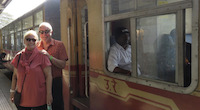 SHIMLA, QUEEN OF THE HILLS: Government officials once retreated to Shimla in the foothills of the Himalayas to escape India’s blazing hot summers. Now tourists make the same journey. READ MORE
SHIMLA, QUEEN OF THE HILLS: Government officials once retreated to Shimla in the foothills of the Himalayas to escape India’s blazing hot summers. Now tourists make the same journey. READ MORE
 TEN THINGS WE LEARNED: Our detailed guide to creating a website, one step at a time. The costs, the mistakes – it’s what we wish we’d known when we started blogging. READ MORE
TEN THINGS WE LEARNED: Our detailed guide to creating a website, one step at a time. The costs, the mistakes – it’s what we wish we’d known when we started blogging. READ MORE
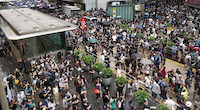 TROUBLED TIMES FOR EXPATS: Moving abroad can seem an idyllic prospect, but what happens when sudden upheavals or the inescapable realities of life intrude? READ MORE
TROUBLED TIMES FOR EXPATS: Moving abroad can seem an idyllic prospect, but what happens when sudden upheavals or the inescapable realities of life intrude? READ MORE
LET'S KEEP IN TOUCH!
GALLERY: HONG KONG'S STUNNING OPERA HOUSE
Futuristic Home
for an Ancient
Artform

COLIN SIMPSON
Xiqu Centre, Hong Kong
CANTONESE opera is reckoned to date back to the 13th century – but now it’s arrived in the 21st century with a bang.
The HK$2.7 billion ($255 million) Xiqu Centre is an ultra-modern venue dedicated to the Cantonese style and other forms of traditional Chinese theatre. It overlooks Hong Kong’s Victoria Harbour in Tsim Sha Tsui, Kowloon.

The centre has a 1,072-seat main theatre, a smaller house, a seminar hall, professional studios and other facilities.

The strikingly contemporary design is accentuated by a traditional wooden structure that stands in the vast atrium.
The wooden building is the venue for a photo exhibition illustrating the development of the site, which took eight years.
The show includes images of women construction workers – a rare sight in many countries, but common in Hong Kong.



Cantonese Opera has been declared part of the intangible cultural heritage of humanity by Unesco.
It is one of hundreds of traditional opera styles from across China, though many are in danger of being lost because of disinterest and neglect. The best known is Peking opera – this photo is from a performance of the Women Generals of the Yang Family at Tsinghua University in Beijing.
The Xiqu Centre has signs describing classic Chinese literary and dramatic characters.


The centre is the first major part of a vast and super-ambitious new arts development to be completed. The West Kowloon Cultural District will eventually include museums, theatres, parks, exhibition spaces and other facilities. As a result there’s a lot of building work going on nearby.



West Kowloon has become a particularly vibrant part of Hong Kong, with buildings such as this massive new station contributing to the air of large-scale urban renewal.
The West Kowloon Station, the terminus for the high-speed rail link to mainland China, is large enough to house a cathedral and puts many airport terminals in the shade.
Updated May 2020


Sign up for our FREE newsletter and never miss a post!
MORE INFO
 XIQU CENTRE/West Kowloon Cultural District site has everything you need to know about visiting the centre, what’s on, ticketing, etc. READ MORE
XIQU CENTRE/West Kowloon Cultural District site has everything you need to know about visiting the centre, what’s on, ticketing, etc. READ MORE
 CHINA DAILY NEWSPAPER COLUMN: A night to remember at the Peking Opera. READ MORE
CHINA DAILY NEWSPAPER COLUMN: A night to remember at the Peking Opera. READ MORE
RELATED
 THE MUCH-LOVED HONG KONG MUSEUM OF ART has finally reopened after a massive four-year refurbishment – and it’s a triumph. READ MORE
THE MUCH-LOVED HONG KONG MUSEUM OF ART has finally reopened after a massive four-year refurbishment – and it’s a triumph. READ MORE
 WATCHING PINK DOLPHINS: Yes, there really are pink dolphins in the waters around Hong Kong, and regular boat trips mean you can watch them frolicking… READ MORE
WATCHING PINK DOLPHINS: Yes, there really are pink dolphins in the waters around Hong Kong, and regular boat trips mean you can watch them frolicking… READ MORE
 NIGHTMARE BUDDHAS: You may think of Buddha as a jolly, fat figure that brings peace and joy to the world. Visit this monastery and you’ll think again. Some of the golden statues of Buddhas… READ MORE
NIGHTMARE BUDDHAS: You may think of Buddha as a jolly, fat figure that brings peace and joy to the world. Visit this monastery and you’ll think again. Some of the golden statues of Buddhas… READ MORE RECOMMENDED
 WELCOME TO OUR WORLD! Afaranwide’s home page – this is where you can find out about our latest posts and other highlights. READ MORE
WELCOME TO OUR WORLD! Afaranwide’s home page – this is where you can find out about our latest posts and other highlights. READ MORE
 TOP 10 ATTRACTIONS: Many of the world’s most popular tourists sites are closed because of the coronavirus crisis, but you can still visit them virtually while you’re self-isolating. READ MORE
TOP 10 ATTRACTIONS: Many of the world’s most popular tourists sites are closed because of the coronavirus crisis, but you can still visit them virtually while you’re self-isolating. READ MORE
 TEN THINGS WE LEARNED: Our detailed guide to creating a website, one step at a time. The costs, the mistakes – it’s what we wish we’d known when we started blogging. READ MORE
TEN THINGS WE LEARNED: Our detailed guide to creating a website, one step at a time. The costs, the mistakes – it’s what we wish we’d known when we started blogging. READ MORE
 SHIMLA, QUEEN OF THE HILLS: Government officials once retreated to Shimla in the foothills of the Himalayas to escape India’s blazing hot summers. Now tourists make the same journey. READ MORE
SHIMLA, QUEEN OF THE HILLS: Government officials once retreated to Shimla in the foothills of the Himalayas to escape India’s blazing hot summers. Now tourists make the same journey. READ MORE
 TROUBLED TIMES FOR EXPATS: Moving abroad can seem an idyllic prospect, but what happens when sudden upheavals or the inescapable realities of life intrude? READ MORE
TROUBLED TIMES FOR EXPATS: Moving abroad can seem an idyllic prospect, but what happens when sudden upheavals or the inescapable realities of life intrude? READ MORE
LET'S KEEP IN TOUCH!

Futuristic Home for an Ancient Artform

COLIN SIMPSON
Xiqu Centre, Hong Kong
CANTONESE opera is reckoned to date back to the 13th century – but now it’s arrived in the 21st century with a bang. The HK$2.7 billion ($255 million) Xiqu Centre is an ultra-modern venue dedicated to the Cantonese style and other forms of traditional Chinese theatre. It overlooks Hong Kong’s Victoria Harbour in Tsim Sha Tsui, Kowloon.

The centre has a 1,072-seat main theatre, a smaller house, a seminar hall, professional studios and other facilities.
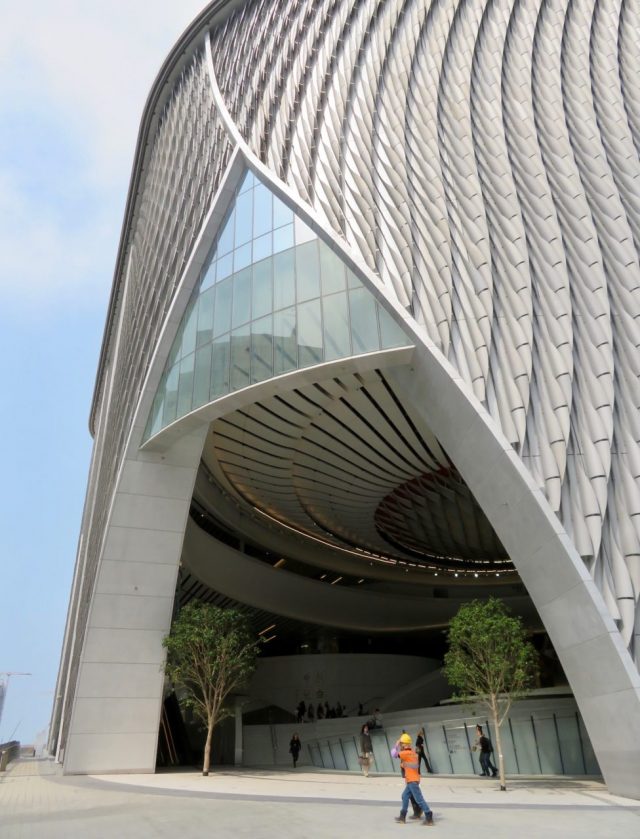
The strikingly contemporary design is accentuated by a traditional wooden structure that stands in the vast atrium.
The wooden building is the venue for a photo exhibition illustrating the development of the site, which took eight years.
The show includes images of women construction workers – a rare sight in many countries, but common in Hong Kong.
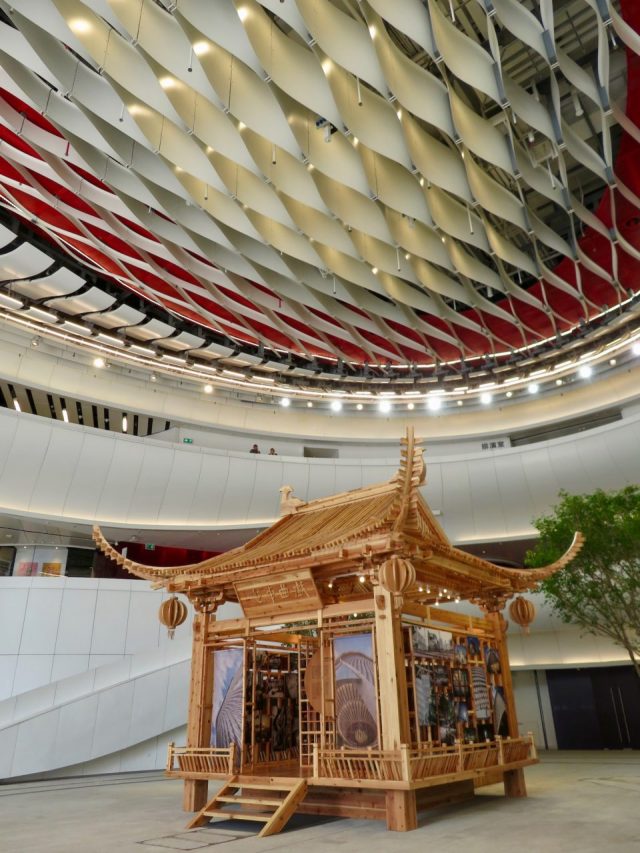
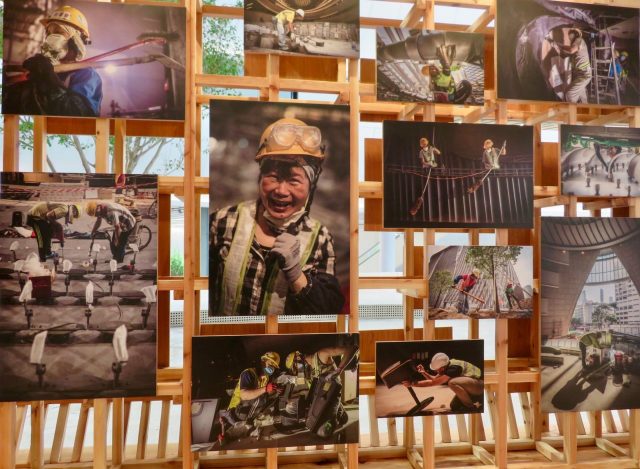
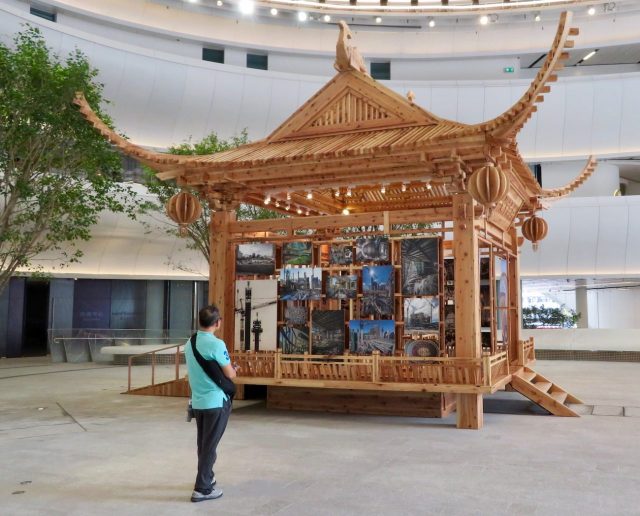

Cantonese Opera has been declared part of the intangible cultural heritage of humanity by Unesco.
It is one of hundreds of traditional opera styles from across China, though many are in danger of being lost because of disinterest and neglect. The best known is Peking opera – this photo is from a performance of the Women Generals of the Yang Family at Tsinghua University in Beijing.
The Xiqu Centre has signs describing classic Chinese literary and dramatic characters.
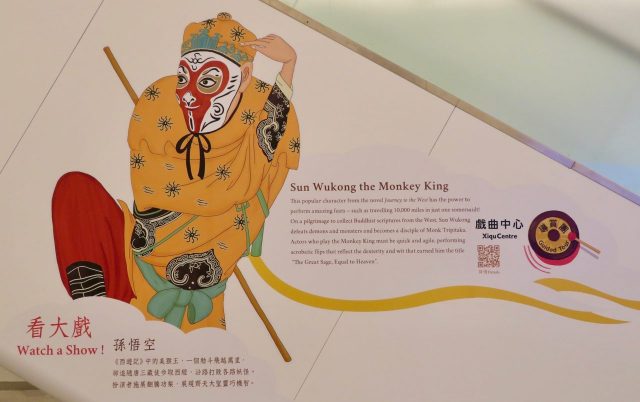
The centre is the first major part of a vast and super-ambitious new arts development to be completed. The West Kowloon Cultural District will eventually include museums, theatres, parks, exhibition spaces and other facilities. As a result there’s a lot of building work going on nearby.
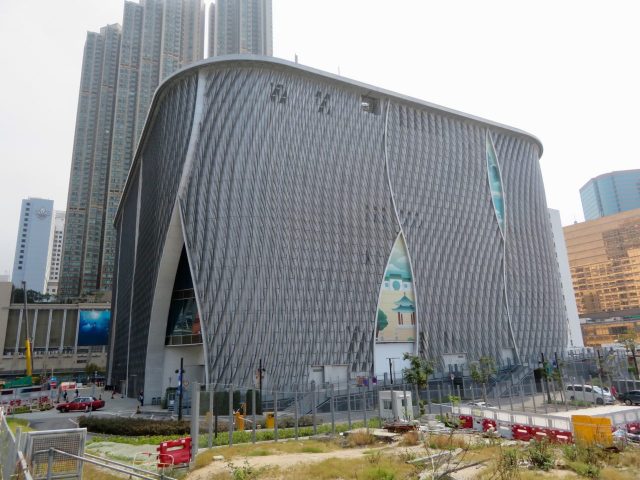
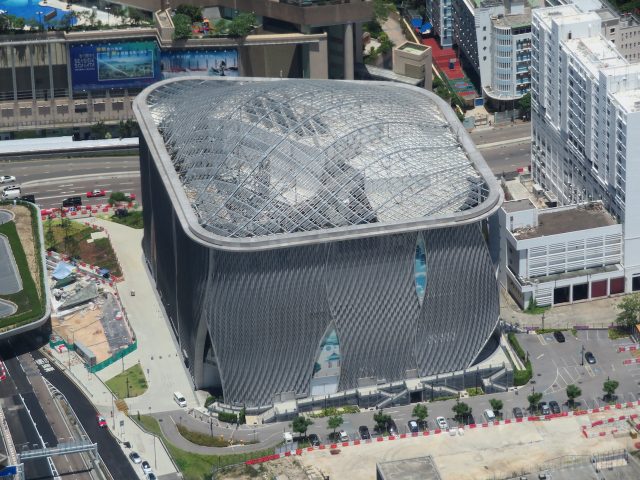
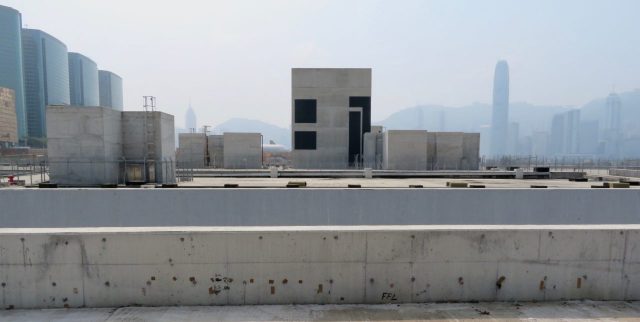
West Kowloon has become a particularly vibrant part of Hong Kong, with buildings such as this massive new station contributing to the air of large-scale urban renewal.

The West Kowloon Station, the terminus for the high-speed rail link to mainland China, is large enough to house a cathedral and puts many airport terminals in the shade.

Updated May 2020
MORE INFO
 XIQU CENTRE/West Kowloon Cultural District site has everything you need to know about visiting the centre, what’s on, ticketing, etc. READ MORE
XIQU CENTRE/West Kowloon Cultural District site has everything you need to know about visiting the centre, what’s on, ticketing, etc. READ MORE
 CHINA DAILY NEWSPAPER COLUMN: A night to remember at the Peking Opera. READ MORE
CHINA DAILY NEWSPAPER COLUMN: A night to remember at the Peking Opera. READ MORE
RELATED
 THE MUCH-LOVED HONG KONG MUSEUM OF ART has finally reopened after a massive four-year refurbishment – and it’s a triumph. READ MORE
THE MUCH-LOVED HONG KONG MUSEUM OF ART has finally reopened after a massive four-year refurbishment – and it’s a triumph. READ MORE
 WATCHING PINK DOLPHINS: Yes, there really are pink dolphins in the waters around Hong Kong, and regular boat trips mean you can watch them frolicking… READ MORE
WATCHING PINK DOLPHINS: Yes, there really are pink dolphins in the waters around Hong Kong, and regular boat trips mean you can watch them frolicking… READ MORE
 NIGHTMARE BUDDHAS: You may think of Buddha as a jolly, fat figure that brings peace and joy to the world. Visit this monastery and you’ll think again. Some of the golden statues of Buddhas… READ MORE
NIGHTMARE BUDDHAS: You may think of Buddha as a jolly, fat figure that brings peace and joy to the world. Visit this monastery and you’ll think again. Some of the golden statues of Buddhas… READ MORE
RECOMMENDED
 WELCOME TO OUR WORLD! Afaranwide’s home page – this is where you can find out about our latest posts and other highlights. READ MORE
WELCOME TO OUR WORLD! Afaranwide’s home page – this is where you can find out about our latest posts and other highlights. READ MORE
 TOP 10 VIRTUAL ATTRACTIONS: Many of the world’s most popular tourists sites are closed because of the coronavirus crisis, but you can still visit them virtually while you’re self-isolating. READ MORE
TOP 10 VIRTUAL ATTRACTIONS: Many of the world’s most popular tourists sites are closed because of the coronavirus crisis, but you can still visit them virtually while you’re self-isolating. READ MORE
 SHIMLA, QUEEN OF THE HILLS: Government officials once retreated to Shimla in the foothills of the Himalayas to escape India’s blazing hot summers. Now tourists make the same journey. READ MORE
SHIMLA, QUEEN OF THE HILLS: Government officials once retreated to Shimla in the foothills of the Himalayas to escape India’s blazing hot summers. Now tourists make the same journey. READ MORE
 TEN THINGS WE LEARNED: Our detailed guide to creating a website, one step at a time. The costs, the mistakes – it’s what we wish we’d known when we started blogging. READ MORE
TEN THINGS WE LEARNED: Our detailed guide to creating a website, one step at a time. The costs, the mistakes – it’s what we wish we’d known when we started blogging. READ MORE
 TROUBLED TIMES FOR EXPATS: Moving abroad can seem an idyllic prospect, but what happens when sudden upheavals or the inescapable realities of life intrude? READ MORE
TROUBLED TIMES FOR EXPATS: Moving abroad can seem an idyllic prospect, but what happens when sudden upheavals or the inescapable realities of life intrude? READ MORE

